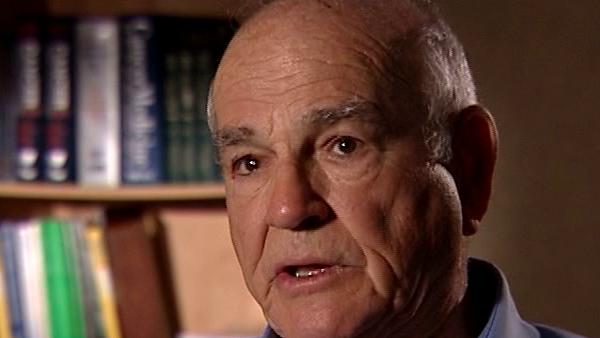NEXT STORY

Caenorhabditis elegans survives the Columbia space shuttle disaster
RELATED STORIES

NEXT STORY

Caenorhabditis elegans survives the Columbia space shuttle disaster
RELATED STORIES



Well, there's a lot of interest in, you know, how… how you make a cell and there are constituents in space that… that form cells, you know, if you define a cell as… as something that has an inside and an outside, it's a big characteristic of a cell, it's got an inside and an outside and it's got, you know, another characteristic, it has a specific semi-permeable, or it has semi-permeability. In other words, there are places where things can get in and out but they're quite specific, not everything can get in through every pore. That's what… from a good deal of contemporary research. Well, they're kind of manufacturing these cells from space-available constituents. This idea that these things get kind of formed from on earth or even conceivably in space. Well, there's another important aspect of it and that is this question of whether life came from elsewhere. Now, that doesn't tell you about the origin of life but it does tell you that that remains a real possibility and this idea of… of life emerging from it, it's been around for quite a long time; you actually find it in religious beliefs and mythic notions, and science fiction, you know, a big thing in science fiction. So, the question is, how… how would it get here? You know, it's hard to believe you can have… you can have DNA floating through space but, as a matter of fact, there have been experiments done. Rocco Mancinelli, a colleague of mine, working with the European Space Agency; you can actually put bacteria in a… in a container, put it outside a… a satellite or space ship, the shuttle, and… or a sounding rocket, you know, something goes up and comes down, and open it and expose it. Well, bacteria, some survive. The probability is that if life ever did come here or came from here and went elsewhere, it would be inside a meteorite because the inside of those meteorites are pretty protected and they don't get very hot because the outer surfaces ablate and the piece that lands is actually fairly cool. It's probably 40 centigrade, tops.
American research physician Baruch Blumberg (1925-2011) was co-recipient of the Nobel Prize in Physiology or Medicine in 1976 along with D Carleton Gajdusek for their work on the origins and spread of infectious viral diseases that led to the discovery of the hepatitis B virus. Blumberg’s work covered many areas including clinical research, epidemiology, virology, genetics and anthropology.
Title: Cells and their possible origins
Listeners: Rebecca Blanchard
Dr Rebecca Blanchard is Director of Clinical Pharmacology at Merck & Co., Inc. in Upper Gwynedd, Pennsylvania. Her education includes a BSc in Pharmacy from Albany College of Pharmacy and a PhD in Pharmaceutical Chemistry from the University of Utah in Salt Lake City. While at Utah, she studied in the laboratories of Dr Raymond Galinsky and Dr Michael Franklin with an emphasis on drug metabolism pathways. After receiving her PhD, Dr Blanchard completed postdoctoral studies with Dr Richard Weinshilboum at the Mayo Clinic with a focus on human pharmacogenetics. While at Mayo, she cloned the human sulfotransferase gene SULT1A1 and identified and functionally characterized common genetic polymorphisms in the SULT1A1 gene. From 1998 to 2004 Dr Blanchard was an Assistant Professor at Fox Chase Cancer Center in Philadelphia. In 2005 she joined the Clinical Pharmacology Department at Merck & Co., Inc. where her work today continues in the early and late development of several novel drugs. At Merck, she has contributed as Clinical Pharmacology Representative on CGRP, Renin, Losartan, Lurasidone and TRPV1 programs and serves as chair of the TRPV1 development team. Dr Blanchard is also Co-chair of the Neurology Pharmacogenomics Working Group at Merck. Nationally, she has served the American Society of Clinical Pharmacology and Therapeutics on the Strategic Task Force and the Board of Directors. Dr Blanchard has also served on NIH study sections, and several Foundation Scientific Advisory Boards.
Tags: Earth, Rocco Mancinelli
Duration: 2 minutes, 38 seconds
Date story recorded: September 2007
Date story went live: 28 September 2009